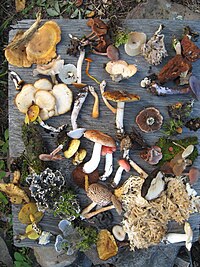
Photo from wikipedia
Studies were conducted to broaden the current knowledge on seasonality, richness, abundance, and role of syrphids flies in the greenhouse pepper agroecosystem (GPA) in northwestern Argentina. In the GPA, a… Click to show full abstract
Studies were conducted to broaden the current knowledge on seasonality, richness, abundance, and role of syrphids flies in the greenhouse pepper agroecosystem (GPA) in northwestern Argentina. In the GPA, a great richness (54 species) and abundance (517 individuals) of syrphids were found within Syrphinae (40 species; 443 individuals) and Eristalinae (14 species; 74 individuals) subfamilies. Besides, three species, Ocyptamus dimidiatus, O. gastrostactus and Toxomerus watsoni, were recorded for the first time in Argentina, and 12 species were recorded for the first time in Tucuman, expanding their geographical distribution to northwestern Argentina. Syrphid population tend to increase in spring and autumn. The environment occupation by different species showed remarkable differences since 41 were found in an open field, three in the greenhouse, and 10 in both environments. The richness and biodiversity were higher at the open field than in the greenhouse, however, these greenhouse species are important as biological control agents (BCA). Among them, the most abundant were Allograpta exotica, A. obliqua, T. duplicatus, Toxomerus sp. 1, O. dimidiatus and O. zoroaster, whose larvae were found feeding on pepper pests such as whiteflies and aphids. New plant-pest-predator associations were established, involving pepper, weeds, aphids, whiteflies, and syrphids. Four collection methods: Malaise trap, sweep net, infested plant tissues, and McPhail trap contributed to 59.2%, 70.4%, 8.6%, and 7.4% of total syrphid richness, respectively. Based on abundance, distribution in the GPA, and direct involvement in pepper pest control, A. exotica, A. obliqua, T. duplicatus, and Toxomerus sp.1 can be used as BCA for the control of whiteflies and aphids in GPA.
Journal Title: International Journal of Tropical Insect Science
Year Published: 2021
Link to full text (if available)
Share on Social Media: Sign Up to like & get
recommendations!